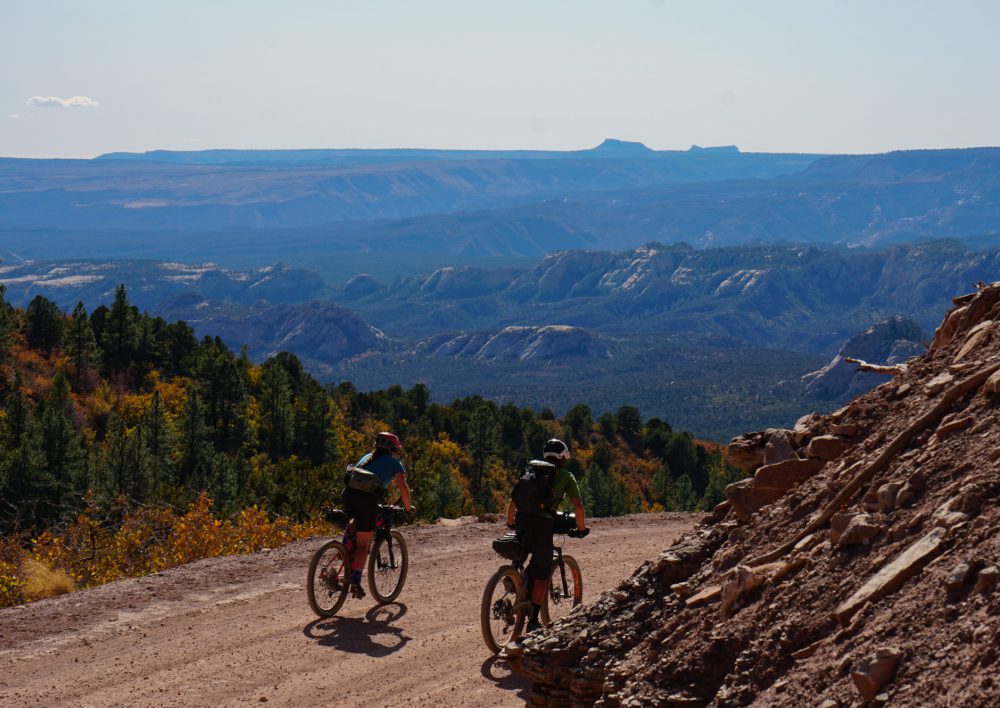Bikepacking the Bears Ears Region
Words and Photos by Kurt Refsnider
In my nearly 3 decades of riding and racing bikes, one theme has returned again and again...
finding solitude and remoteness. When I was a kid pedaling emphatically around my neighborhood, that sense of solitude and relative remoteness was found leaving the houses behind and venturing onto dirt trails in the nearby woods along the Mississippi River.
As I got older and started pedaling bigger miles on skinny tires,
I found my escape by leaving the suburbs and riding well beyond on quiet country roads. After I moved out West, I spent much of my riding time exploring public lands in the foothills of the Rockies. And after I began bikepacking a decade ago, that solitude and remoteness gradually became characteristics of my favorite ultra races and longer trips. One of the most remote and powerful places I’ve pedaled and have returned to numerous times are the mesas and canyons of the Bears Ears region of southern Utah.
My first pedal-powered trip into this region was in 2013
as part of a month-long solo bikepacking adventure meandering across the Colorado Plateau. I carried a thick stack of maps and had no real plan. I had spent some time in this landscape in the past but never traveling entirely under my own power.
Small towns are widely scattered
and reliable water sources can be very sparse. The experience, especially traveling alone, was intimidating, to say the least. I’d leave communities with 5 days worth of food, and I usually would load up with 2+ gallons of water when I could since I was never quite certain where the next water might be.

Pedaling along at 8 mph,
my mind tried to take this all in, to link together on a mental map how all these stunning landforms fit together. I tried to puzzle out how the rock layers in one area correlated to rock layers in another (I am a geologist, after all!). And in the process, my sinuous route followed the spine of a tilted and heavily eroded mesa up higher and higher as canyons plunged away to both my left and right.
Reaching the cooler air of Elk Ridge, I passed the iconic twin Bears Ears Buttes and turned north. The Colorado River canyon was far below to the west, and a whole separate suite of canyons extended away to the east. But I was able to ride through the sky above all that on Elk Ridge. Intermittent springs offered clear, cold water. And I didn’t see another soul for days.
On that trip,
my eyes were opened to the fact that places like that exist and offer a sense of solitude and awe that are so rare. In the subsequent years, I’ve gone back to bikepacking, hike, and further explore that area time and time again. Each time, the experience is even more impactful than the prior visit. I watched as the area was given the protection of National Monument designation at the urging of local Native American tribes, only to have those protections yanked away just a few years later.
I’ve had the privilege of bikepacking in stunning landscapes all across the globe,
but Bears Ears Region is without a doubt the most impactful and powerful. To help more riders experience this region and understand more about the importance of protecting it, I’m excited to share that Bikepacking Roots has released the Bears Ears Loops and a 100-page guidebook. With planning resources and an intentionally developed route, other bikepackers will be able to pedal here without the sense of intimidation and uncertainty that I so strongly remember from my first trip through the region seven years ago. And hopefully, those riders will develop a similarly strong connection to such an amazing place.